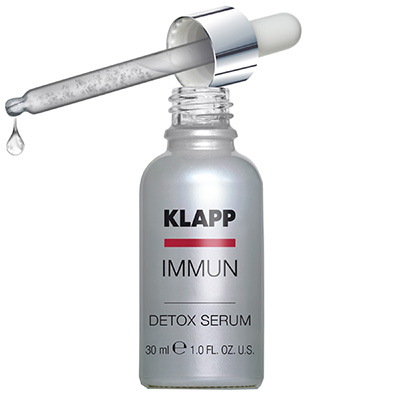There is a massive global shift to products that are natural yet highly effective. It’s the fastest growing segment in skincare and estimates are that the organic skincare market will more than double by 2020. But the landscape is shrouded in confusion, as Jenni Gilbert reports.
Here at SPA+CLINIC we are asked for advice on a regular basis about “natural skincare that works”. That’s a pretty big ask because, as you’ll read, the goal posts are far from clear.
The questions often stump us, as many professionals we speak to. Imagine what your clients are wondering!
And what to make of the key marketing prompts: Organic. Certified organic. Green. Eco. Sustainable. Cruelty free. No nasties …
Words like “chemicals” and “synthetic” are bandied about as bogeys, when in fact they are too often misrepresented. And going totally au naturel can actually be bad for skin, as you’ll discover.
It becomes even trickier when there is still no recognised standard for what constitutes a natural beauty product in 2016.
What does it all mean for your clients – thus your business? We take a look.
CHEMICAL IMBALANCE
Chemicals are widely reviled as the bogeys of skincare. Yet our bodies are a composition of chemicals, as is the universe and everything in it.
Michelle Reeve, creator of Australia’s Waterlily spa skincare, asks: “If I invited you to apply the following chemical cocktail to your skin, would you?:
WATER (75%); SUGARS (12%) GLUCOSE (48%), FRUCTOSE (40%), SUCROSE (2%), MALTOSE (<1%), STARCH (5%), FIBRE (3%), (E460, E461, E452, E464, E456, E467); AMINO ACIDS (GLUTAMIC ACID (19%), ASPARTIC ACID (15%), HISTONE (11%), LEUCINE (7%), LYSINE (5%), PHENALALANINE (4%), ARGININE (4%), VALINE (4%), ALANINE (4%), SERINE (4%), GLYCINE (3%), THREONINE (3%), ISOLEUCINE (3%), PROLINE (3%), TRYPTOPHAN (1%), CYSTINE (1%), TYROSINE (1%), METHONINE (1%); FATTY ACIDS (1%) (PALMITIC ACID (30%), OMEGA-3 FATTY ACID, LINOLEIC ACID (14%), PALMITOLEIC ACID (3%), STEARIC ACID (2%), LAURIC ACID (1%), MYRISTIC ACID (1%), CAPRIC ACID (<1%), ASH (<1%), PHYTOSTEROLS, COLALIC ACID, E300, E306 (TOCOPHEROL), PHYLLOQUINONE, THIAMIN; COLOURS (YELLOW-ORANGE E101) (RIBOFLAVIN) (YELLOW-BROWN e160a); FLAVOURS (ETHYL HEXANOATE, ETHYL BUTONOATE, 3-METHYLBUT-1-YLETHANNOATE, PENTYL ACETATE), E1510, ETHENE GAS.

“I would! After all, it’s the chemical composition of a banana. Chemicals are the inescapable building blocks of the world around us. Yet it appears that the unassuming periodic table is being used as leverage in cosmetic warfare.
“The skincare choices that the industry presents are irrational: Chemical v Natural, Active v Botanical, Cosmeceutical v Aromatherapy.
“The aesthetics industry is approaching a crossroads where consumers are being asked to choose exclusively between ‘remedial’ cosmeceutical ranges or ‘natural’ organic alternatives.
“Neither of these markets will deliver results unless the right combination of the right ingredients is delivered in the right concentration.
“My passion in creating the Waterlily formulations is an embrace of how the individual chemical constituents of complex botanical ingredients interact with the skin at a cellular level.”
BUYER DO BEWARE
The general consensus is that the chemicals in cosmetics to avoid come under umbrella terms such as synthetic fragrances, artificial colours or ingredients from petrochemicals.

With petrochemicals, look out for terms like: paraffin wax; mineral oil; toluene; benzene; phenoxyethanol; anything with PEG (polyethylene glycol); anything ending in “eth” indicates that it required ethylene oxide (a petrochemical) to produce – eg. myreth, oleth, laureth, ceteareth; anything with DEA (diethanolamine) or MEA (ethanolamine); butanol and any word with “butyl” – butyl alcohol, butylparaben, butylene glycol; ethanol and any word with “ethyl” – ethyl alcohol, ethylene glycol, ethylene dichloride, EDTA (ethylene-diamine-tetracetatic acid), ethylhexylglycerin; any word with “propyl” – isopropyl alcohol, propylene glycol, propyl alcohol, cocamidopropyl betaine; methanol and any word with “methyl” – methyl alcohol, methylparaben, methylcellulose; parfum or fragrance – 95 percent of chemicals used in fragrance are from petroleum.
Educate yourself as much as possible. This will ensure that natural products you source for your clients are not only effective but safe.
IS `SYNTHETIC’ A SIN?
“Synthetic” has also developed a bad reputation, but: “Sometimes it is necessary to use non-toxic synthetic ingredients when no equivalent can be found in nature,” says Dr Teri Dourmashkin, founder of La Vie Celeste skincare.
“More and more naturally-based companies are using the `hottest’ anti-ageing ingredients in their products. Some are not 100 percent natural.
“Are they safe? According to some research data that evaluates the safety of cosmetic ingredients, they are rated as relatively non-toxic.
“Among them are Matrixyl 3000, a synthetic pentapedtide, which is supposed to increase collagen production, hyaluronic acid, a powerful humectant which occurs naturally in the human body, and R-Lipoic Acid, a powerful antioxidant which mimics what our bodies naturally produce, but is synthesised in a lab because there is not enough of it found in nature.
“In our opinion, there are really no safe and effective all-natural preservatives. While it is sometimes apparent that a product has gone `bad’ (eg. visible mould or product separation), bacteria may not always be visible to the naked eye.”
GREEN MACHINE
Also called sustainable chemistry, green chemistry is an area of chemistry and chemical engineering focused on the design of products and processes that minimise the use and generation of hazardous substances.
Some natural preservatives are originally plant-derived, but must undergo a chemical process to convert them into a viable and effective compound strong enough to prevent and combat bacteria and fungus.
A balance needs to be struck between effectiveness and gentleness – in other words, a preservative that is not only non-toxic but one that won’t cause, in the majority of people, skin irritations or allergic reactions (such as dermatitis).
 For instance, Elliot Isaacs, pharmacologist and founder of British green chemistry cosmeceutical brand Medik8, wanted to bring the science of drug development into cosmetics, where delivering stable, non-irritating potent ingredients to the skin is the rule not the exception.
For instance, Elliot Isaacs, pharmacologist and founder of British green chemistry cosmeceutical brand Medik8, wanted to bring the science of drug development into cosmetics, where delivering stable, non-irritating potent ingredients to the skin is the rule not the exception.
“It is a myth that a product designed for sensitive skin would not be as effective just because it is less irritating,” says Elliot.
“It was previously incorrectly assumed that aggressive products causing significant inflammation gave the best results; the idea being that aggressive products provoke a healing response.
“But current opinion, based on the latest research, is that excessive inflammation can damage cells causing longterm skin damage, thus perversely causing premature skin ageing.”
HOW NATURAL IS TOO NATURAL?
Just like the confusion over the use of chemicals and synthetic ingredients in skincare, many preservatives are getting an unfair reputation.
Not all preservatives are “nasties” – and, indeed, skincare without any preservatives quickly becomes contaminated, posing risks of infection or inflammation.
“Cosmetic products consist mainly of water, sugars and proteins,” says Andrea Webber, international head trainer for Babor.
 “This is an environment that many microorganisms need as growing conditions. Actually, they can thrive in unpreserved cosmetic products and it does not take long for a cream to be spoiled by microbes.
“This is an environment that many microorganisms need as growing conditions. Actually, they can thrive in unpreserved cosmetic products and it does not take long for a cream to be spoiled by microbes.
“This is not necessarily visible for the human eye and can impose a risk to the user’s health, especially if used close to mucous membranes (eyes, mouth) or if the skin has lesions or is very dry and the skin barrier is impaired.
“Therefore careful preservation of cosmetic products is inevitable but there is no easy formulation guideline, or the ability to say what is the `best’ or `right’ preservative to use.
“Each and every product has to be tested individually for the right preservative system.
“What can be used safely is regulated [for Babor] by European law. All preservatives listed in the Cosmetics Directive have been tested intensively for their safety so that in principle they are all safe.
“All cosmetics on the market – especially in the European Union – have to follow these principles. For that, each and every cosmetic product to be sold in the EU has to undergo a safety assessment by an expert scientist.”
CHOOSING NATURAL SKINCARE
It’s not only about what is or isn’t on the label of a natural skincare product, but the methodology used to ensure that any potent ingredients that are on the label are fully available at the deepest levels in the end product, according to Ania’s Suzannah Hogan.
So, when scoping for natural skincare ranges to introduce to your business for in-clinic treatments and to retail to clients for home use, delve as deeply as possible into how the products are formulated and the delivery systems used. This could make all the difference between offering your clients something that “works” – and something that doesn’t.
“Put simply, better methodology can improve the same actives – and in the case of natural actives, this is very much occurring,” says Suzannah.
“At Ania, we look at our products and procedures as a form of healing medicine, with a dual purpose of improving the skin and harmonising the underlying non-physical characteristics that show through our skin.
“Not everyone appreciates that ingredients in skincare (particularly essential oils) are just like wine, in that, the very same ingredient on a label can certainly be very different to experience, and in efficacy, depending on climate, soil, craftsmanship, storage and so on.
“One need only experience a commercially-produced organic lavender versus a wild, organic master artisan distilled lavender to understand just how wide the spectrum is – even within organics.”




